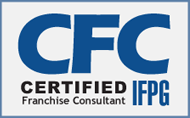Stepping into the world of franchising can feel like navigating a complex maze. At the heart of this journey lies the Franchise Disclosure Document (FDD) – a critical roadmap that can make or break your entrepreneurial dreams. But what exactly is this mysterious document, and why does it matter?
What is a Franchise Disclosure Document?
Think of the FDD as your franchise opportunity’s most detailed blueprint. Mandated by the Federal Trade Commission, this comprehensive document is your insider’s guide to understanding everything about a potential franchise investment. Organized into 23 distinct sections, the FDD pulls back the curtain on every aspect of the business relationship.
The Four Key Categories of FDD Sections
1. The “Who” Group: Understanding the Franchise’s Identity
The first four items are all about getting to know the franchisor:
- Franchisor’s Background: Who are they? How long have they been in business?
- Business Experience: Meet the key players behind the franchise
- Litigation History: Any legal skeletons in the closet?
- Bankruptcy Details: Past financial challenges that might impact your future
2. The “How Much” Group: Financial Commitments
These sections dive deep into the financial landscape:
- Initial Fees: What’s the price of entry?
- Ongoing Fees: Royalties, technology fees, and other financial obligations
- Estimated Initial Investment: The true cost of starting your franchise
- Purchasing Restrictions: Where and how you can source your supplies
3. The “How” Group: Operational Nitty-Gritty
Here’s where you’ll understand the day-to-day realities:
- Franchisee Obligations: What’s expected of you
- Franchisor Support: What help will you receive?
- Territory Rights: Your exclusive business domain
- Operational Restrictions: What you can and cannot do
- Renewal and Termination Terms: The fine print of your franchise relationship
4. The “Numbers” Group: Performance Insights
The final sections reveal the financial health of the franchise:
- Earnings Claims: Potential financial performance
- Franchise System Growth: How the brand is expanding
- Financial Statements: The franchisor’s financial health
Critical Sections to Scrutinize
Must-Read Sections
- Item 11 (Franchisor’s Assistance): Understand exactly what support you’ll receive
- Item 19 (Financial Performance): Realistic earnings expectations
- Item 7 (Initial Investment): True startup costs
- Item 3 (Litigation History): Potential red flags
Professional Tips for Reviewing Your FDD
- Take Your Time: Don’t rush through this critical document
- Seek Legal Expertise: A franchise attorney can be your best ally
- Compare Multiple FDDs: Don’t limit yourself to one opportunity
- Ask Questions: Clarify anything you don’t understand
The 14-Day Rule
The FTC requires franchisors to provide you with the FDD at least 14 days before any agreement is signed. Use this time wisely:
- Carefully review every section
- Consult with professionals
- Perform due diligence
- Ask detailed questions
Registration States: An Important Consideration
Some states have additional franchise registration requirements. If you’re in states like California, New York, or Illinois, there are extra layers of protection and scrutiny for franchise offerings.
Your Franchise Journey Starts Here
The Franchise Disclosure Document might seem intimidating, but it’s your most powerful tool for making an informed decision. It’s not just paperwork – it’s your roadmap to understanding a potential business opportunity.
Remember: Approximately 800,000 franchise businesses in the United States rely on the FDD. With careful review and understanding, you could be next!
Disclaimer: This article is for informational purposes only. Always consult with a qualified franchise attorney before making any investment decisions.





